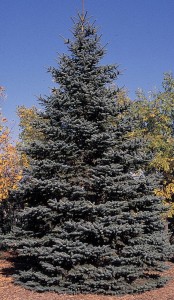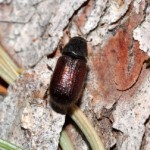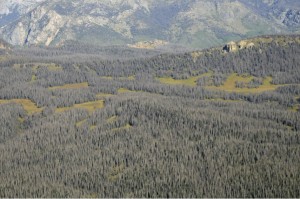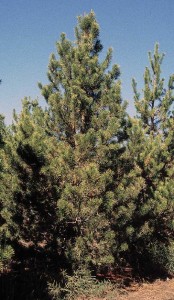21 December 2015
Climate change and bark beetles spell doom for Rocky Mountain spruce forests
Posted by lhwang

Blue Spruce
Credit: USDA-NRCS PLANTS Database via Wikimedia Commons
by Ramin Skibba
The combination of climate change and spruce bark beetles could drastically alter Rocky Mountain spruce and pine tree populations over the next three centuries, according to a new study. Using an improved model of forest growth, death, and regeneration, a group of scientists predicts that spruce populations will decline and lodgepole pines will take their place.
According to new research presented at the 2015 American Geophysical Union Fall Meeting, the demographics of a forested region can be dramatically affected by insect outbreaks and fires over time. In addition, different kinds of trees have different tolerance to drought, strong winds and temperature changes. “These act to create competition between individual species and even between trees,” said Adrianna Foster, an environmental scientist at the University of Virginia and lead author of the new study.

An adult spruce beetle on the bark of a tree.
Credit: William M. Ciesla, Forest Health Management International
Bark beetles are tiny—only a quarter inch in length, smaller than a grain of rice—but given the opportunity, they can rapidly consume a forest. According to the U.S. Forest Service, over the past 15 years, pine beetles have devastated Rocky Mountain forests, killing off tens of millions of lodgepole pines. But if the new study’s predictions are correct, the trees stand to make a comeback as spruce trees decline, according to Foster.
Foster developed a new model of the effects of a spruce beetle infestation on individual trees and their neighbors. She tested it against data collected from four sites in the Wyoming and Colorado Rocky Mountain forests near the continental divide, including inventories and trunk width measurements made by the U.S. Forest Service.
Foster assumed a climate change scenario in which temperatures rise by 3 °C within 100 years, making trees more vulnerable to both fires and beetles. Higher temperatures speed up spruce beetle population growth, so that the beetles develop into adults in one year rather than two, according to the study. This unleashes more beetles on the spruce forests as global warming continues, according to Foster.
“Without these disturbances, the spruce trees are fat and happy and growing,” said Jacquelyn Shuman, an environmental scientist at the University of Virginia and co-author of the study. But when climate change and spruce beetles are included, “the model is closer to reality, giving us more faith in projecting it forward,” she said.

Nearly every mature spruce tree has been killed by spruce beetle in this area of the Rio Grande National Forest in southwest Colorado.
Credit: U.S. Forest Service; photo: Brian Howell
The team’s most successful model predicts that the combined effects of bark beetles and climate change will gradually kill off massive numbers of spruce trees, which will not be replaced. As a result, Foster and her colleagues inferred that other tree species will fill the forests’ power vacuum, so that in the next century, spruce will no longer be dominant in the Rocky Mountains.
Based on data at their southern Wyoming site, Foster concluded that spruce will be reduced to only 6% of the landscape in 300 years, with mostly lodgepole pines taking their place. Furthermore, the rising temperature will enable the rise of Douglas fir trees, which normally flourish at lower elevations. “It doesn’t look good for spruce,” Foster said.
– Ramin Skibba is a freelance science writer and a graduate student in the UC Santa Cruz science communication program. You can follow him on twitter at @raminskibba











 GeoSpace is a blog on Earth and space science, managed by AGU’s Public Information staff. The blog features posts by AGU writers and guest contributors on all sorts of relevant science topics, but with a focus on new research and geo and space sciences-related stories that are currently in the news.
GeoSpace is a blog on Earth and space science, managed by AGU’s Public Information staff. The blog features posts by AGU writers and guest contributors on all sorts of relevant science topics, but with a focus on new research and geo and space sciences-related stories that are currently in the news.